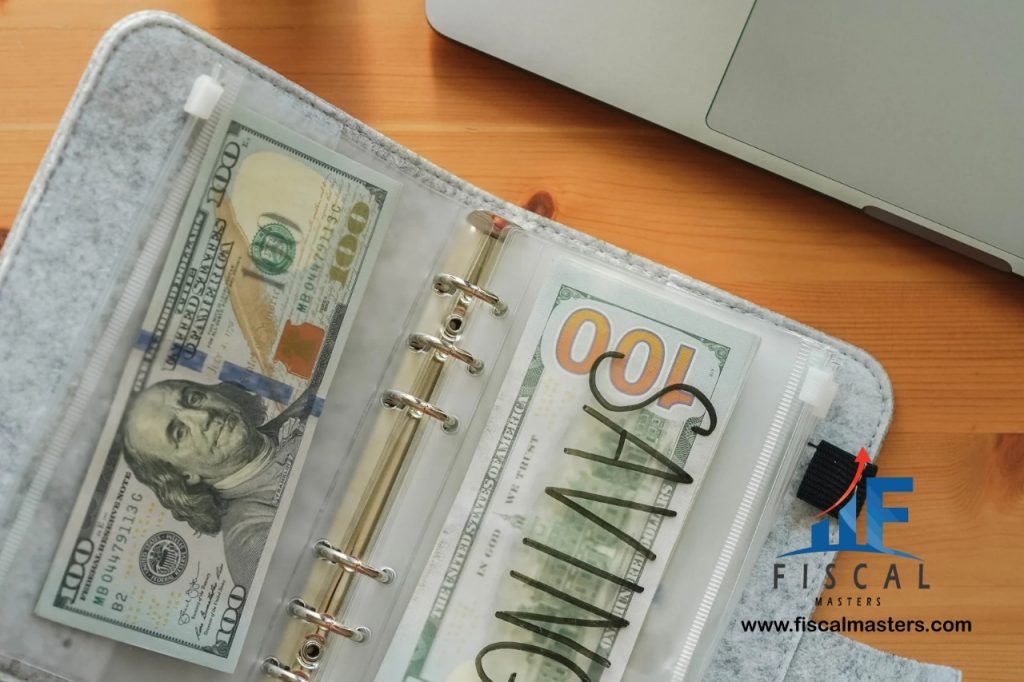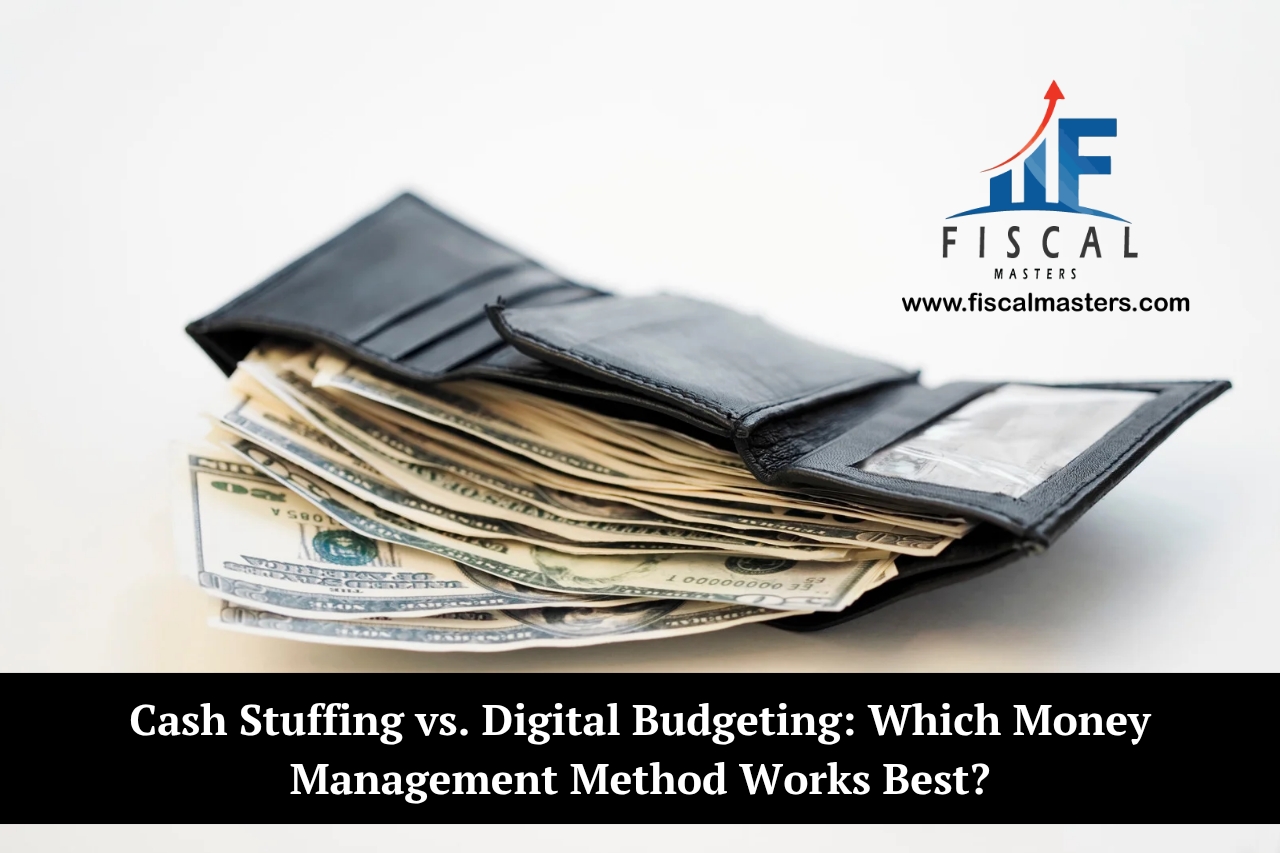Cash stuffing vs digital budgeting, which one is better? Sara was sitting in her room again. Envelopes surrounded her like fallen leaves. Each envelope had groceries, bills, rent, fuel written on them. She picked up the groceries one empty. She peeked inside fuel of Rs. 200. The rent was still full. But she had two weeks left in the month.
This was her third month using cash stuffing. She’d watched all the videos and bought a cute binder. She labeled her envelopes with pastel markers. She even used stickers. But today, it wasn’t fun. It was stressful. The money was gone.
Check out: The Future of Cashless Payments: How Mobile Wallets and Contactless Payments are Changing the Game
Faizan, across the city, had a different problem. His budgeting app buzzed again. “You’ve overspent on dining out.” He checked the graphs. Rs. 13,200 on food this month. Last month was Rs. 11,000. The colors on his dashboard looked angry. Red meant overspending, yellow meant close, and green was rare.
Faizan had used digital budgeting apps since 2023. His phone was loaded: Mint, YNAB, PocketGuard. He could track subscriptions, expenses, savings goals. But it didn’t stop him from swiping his card. He knew where his money went. But he still felt broken every month.
Learn more: How to Get a Loan from Cash App: A Step-by-Step Guide to Accessing Emergency Funding
Cash stuffing vs. Digital budgeting is the real challenge. This article will explore both paths. The emotional world of envelopes. The data-driven power of apps. By the end, you’ll know which method fits your life best. Let’s walk through this one wallet at a time.

What’s the Hype About Cash Stuffing vs Digital Budgeting?
Something interesting happened after COVID-19 lockdowns. People started caring more about money. Jobs became unstable and prices rose. Suddenly, budgeting became cool. Cash stuffing vs. digital budgeting became the internet’s favorite debate. On TikTok, creators showed off budgeting binders. They labeled cash pouches like groceries, skincare and gifts.
It was really a self-care habit. The process felt real. When you stuff an envelope, you think twice and slow down. That’s why people love it. At the same time, digital budgeting exploded. Millennials and Gen Z downloaded apps. They wanted graphs, insights, reminders. They linked their bank accounts and their spending got sorted into categories like food, rent, fun, and savings.
Some even got text alerts for overspending. Both methods went viral for one reason. They gave people results. A 2024 report from CNBC found that 67% of people using budgeting apps saved more in just three months..
Why does the hype matter? Because money is emotional. We don’t just need a method. We need a mindset. Cash stuffing helps people feel their spending. Digital budgeting helps people understand it. The hype is real because the results are real.
Read more: Best Student Budget Hacks You Wish You Knew Earlier! – March 2025
Traditional Budgeting vs Digital Apps
Your mom’s budget notebook was traditional budgeting. She’d write every expense. Check receipts. Do math by hand. She used colors, lists, and sometimes even ruled lines. It took time but it worked. Now imagine a budgeting app. The app tracks your spending. You connect to your bank.
It categorizes expenses automatically. Rent, groceries, bills and it’s all sorted. That’s digital budgeting in 2025. So, which is better in traditional budgeting vs digital apps? Let’s compare. Traditional methods help you slow down. Writing things forces reflection. You remember what you spent. You stay mindful. For people who overspend emotionally, this method works wonders.
Read more:Mastering your Finances: A Step-by-Step Guide to Creating and Sticking to a Monthly Budget
But digital apps are fast and visual. They give you charts. They calculate everything. You don’t need to add or subtract. You just open your phone. Some even forecast future expenses. Many people mix both now.
Ali uses a notebook to plan his weekly meals. Then, he logs expenses in his app. It’s the best of both worlds. Old school builds awareness. Digital tools add precision. Use what you’ll stick with. Consistency matters more than convenience.
How Does the Envelope Budgeting Method Actually Work?
The envelope budgeting method is exactly what it sounds like. You take out cash after payday. You divide it into categories like rent, fuel, food, and fun. Then you put each amount into a labeled envelope. You can’t borrow from one to the other. Once your “groceries” envelope is empty, you’re done.
No more chai, snacks, or late-night deliveries. This system teaches control. You feel your limits. You hold your budget in your hands. The physical action matters. Counting notes. Sliding them into envelopes. Watching them shrink. It creates a pause. That pause saves money. Apps can’t always do that but envelopes can.

Best Budgeting Apps in 2025
The race for the best budgeting apps 2025 is fierce. New tools launch monthly. But a few stand out. These apps dominate downloads and save wallets. YNAB (You Need A Budget) should be your favorite. It lets you assign every rupee a job. You plan before spending. You adjust when surprises come. It’s proactive not reactive. Goodbudget is great for envelope fans.
Read more: Stock Diversification: Why Diversification Matters in Stock Market Investing – February 2025
It simulates envelopes digitally. You don’t carry cash but you still have limits. Mint connects to your bank. It tracks bills, income, and subscriptions. It shows credit score changes too. PocketGuard tells you what’s safe to spend. It removes recurring bills and savings before giving you a number. That number is your green zone. Apps help users save without thinking.
Notifications, goals, and auto-saving features work well. But only if you open the app regularly. Faizan learned this the hard way. He ignored alerts overspent. Now he checks his dashboard weekly and it’s working.
Money Management for Millennials
Money management for millennials isn’t one size fits all. They want control but not complexity. Many millennials prefer apps. They like speed, automation, and phone access. They want to know how much they spent at Starbucks. Or how their savings are growing. Apps offer this easily.
Read more: The Future of Cashless Payments: How Mobile Wallets and Contactless Payments are Changing the Game
But some millennials still love cash. Especially for daily spending. It’s harder to overspend when you only have Rs. 2,000 in your pocket. Ayaz is a software developer. He uses YNAB for tracking goals. But he withdraws cash for fun spending. Rs. 3,000 every Friday. When it’s gone, it’s gone. No regrets and overdrafts.
How to Track Spending Habits Without Getting Overwhelmed?
Tracking sounds exhausting. But it doesn’t have to be. You don’t need to log every chai or toffee. You just need a system. Start small. Track three things. These things include groceries, fuel, and dining out. Use an app or a small notebook or even a voice memo. The goal is awareness.
Apps like Mint and PocketGuard automate tracking. You connect your bank. They sort expenses into categories. You see graphs and trends. Noreen uses spreadsheets. She color codes expenses. It’s therapeutic for her. Her friend Hafsa uses Goodbudget.
Read more : Which is better for saving?
It’s simple and synced. Tracking helps spot leaks. You find habits and adjust slowly. Don’t aim for perfection rather aim for understanding.

Cash-Based vs Cashless Budgeting
Cash-based vs cashless budgeting feels like a safety debate. Cash can’t be hacked. You can’t get phished. It’s safe in your hand. Cashless systems offer fraud protection. Alerts. Freezing cards. Recovering money. Apps help you lock things down. But only if you use them wisely.
Zainab had her card skimmed at a petrol pump. Her bank froze it fast. She recovered the amount. Cash can’t do that. But it also doesn’t need passwords. Both methods are secure with care. Protect your wallet. Protect your phone. Don’t keep all your eggs in one basket.
Read more: Graduate Debt-Free: Smart Financial Tips Every Student Should Know!- March 2025
Personal Finance Tools Comparison
In this personal finance tools comparison, we’ve seen both extremes. Envelopes offer emotional control. Apps offer tech-driven discipline. But what works best? Others go full app or full envelope. The best choice depends on your behavior, not your bank. Fahad tried everything. Apps confused him.
Cash scared him. Now he uses Goodbudget and physical envelopes. He tracks digitally and spends time physically because it always works. Choose what fits your mind. What makes you pause? What makes you stay consistent? That’s the real tool and your financial power.
Conclusion
So here we are. One final question left. Between cash stuffing vs. digital budgeting, which actually works better? The answer isn’t black and white. Both methods can succeed or fail. What matters most isn’t the tool. It’s the habit behind it. The system that works is the one you’ll stick to even on stressful days or tight months.
Cash stuffing helps emotional spenders. It’s physical because you hold your money. You watch it go. That pause helps many rethink unnecessary purchases. It creates strong spending boundaries but it also has limits. Carrying cash isn’t always safe or convenient. You can lose it or spend from the wrong envelope. Take Sara and Faizan. She uses envelopes for food.
He uses apps for bills. Both methods bring them peace. Both give them control. That’s the real answer. Cash stuffing vs digital budgeting isn’t about one winning. It’s about finding what supports your mindset. Digital budgeting is fast and efficient. Apps track everything. They show you trends and spending categories. Choose the method that makes money feel real to you. Because peace of mind is priceless and the right budget can give you that.

